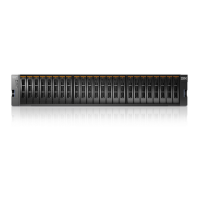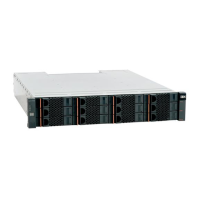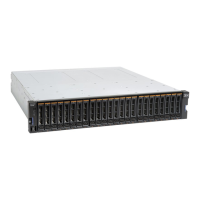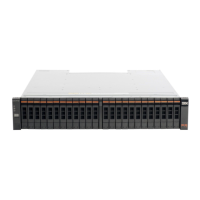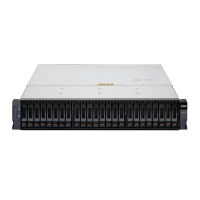Appendix B. Terminology 827
Internet Small Computer System Interface qualified name
Internet Small Computer System Interface (iSCSI) qualified name (IQN) refers to special
names that identify both iSCSI initiators and targets. IQN is one of the three name formats
that is provided by iSCSI. The IQN format is iqn.<yyyy-mm>.<reversed domain name>. For
example, the default for a Storwize V5000 canister can be in the following format:
iqn.1986-03.com.ibm:2076.<clustername>.<nodename>
Internet storage name service
The Internet storage name service (iSNS) protocol that is used by a host system to manage
iSCSI targets and the automated iSCSI discovery, management, and configuration of iSCSI
and FC devices. It was defined in Request for Comments (RFC) 4171.
Inter-switch link hop
An inter-switch link (ISL) is a connection between two switches and counted as one ISL hop.
The number of hops is always counted on the shortest route between two N-ports (device
connections). In an IBM Storwize V5000 environment, the number of ISL hops is counted on
the shortest route between the pair of canister that are farthest apart. The Storwize V5000
supports a maximum of three ISL hops.
Input/output group
A collection of volumes and canister relationships that present a common interface to host
systems. Each pair of canister is known as an input/output (I/O) group.
iSCSI initiator
An initiator functions as an iSCSI client. An initiator typically serves the same purpose to a
computer as a SCSI bus adapter would, except that, instead of physically cabling SCSI
devices (like hard drives and tape changers), an iSCSI initiator sends SCSI commands over
an IP network.
iSCSI session
An iSCSI Initiator and an iSCSI Target talk with each other and this conversation called an
iSCSI Session.
iSCSI target
An iSCSI target is a storage resource located on an Internet Small Computer System
Interface (iSCSI) server.
Latency
The time interval between the initiation of a send operation by a source task and the
completion of the matching receive operation by the target task. More generally, latency is the
time between a task initiating data transfer and the time that transfer is recognized as
complete at the data destination.
Least recently used
Least recently used (LRU) pertains to an algorithm used to identify and make available the
cache space that contains the data that was least recently used.
Licensed capacity
The amount of capacity on a storage system that a user is entitled to configure.
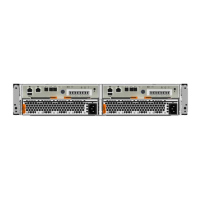
